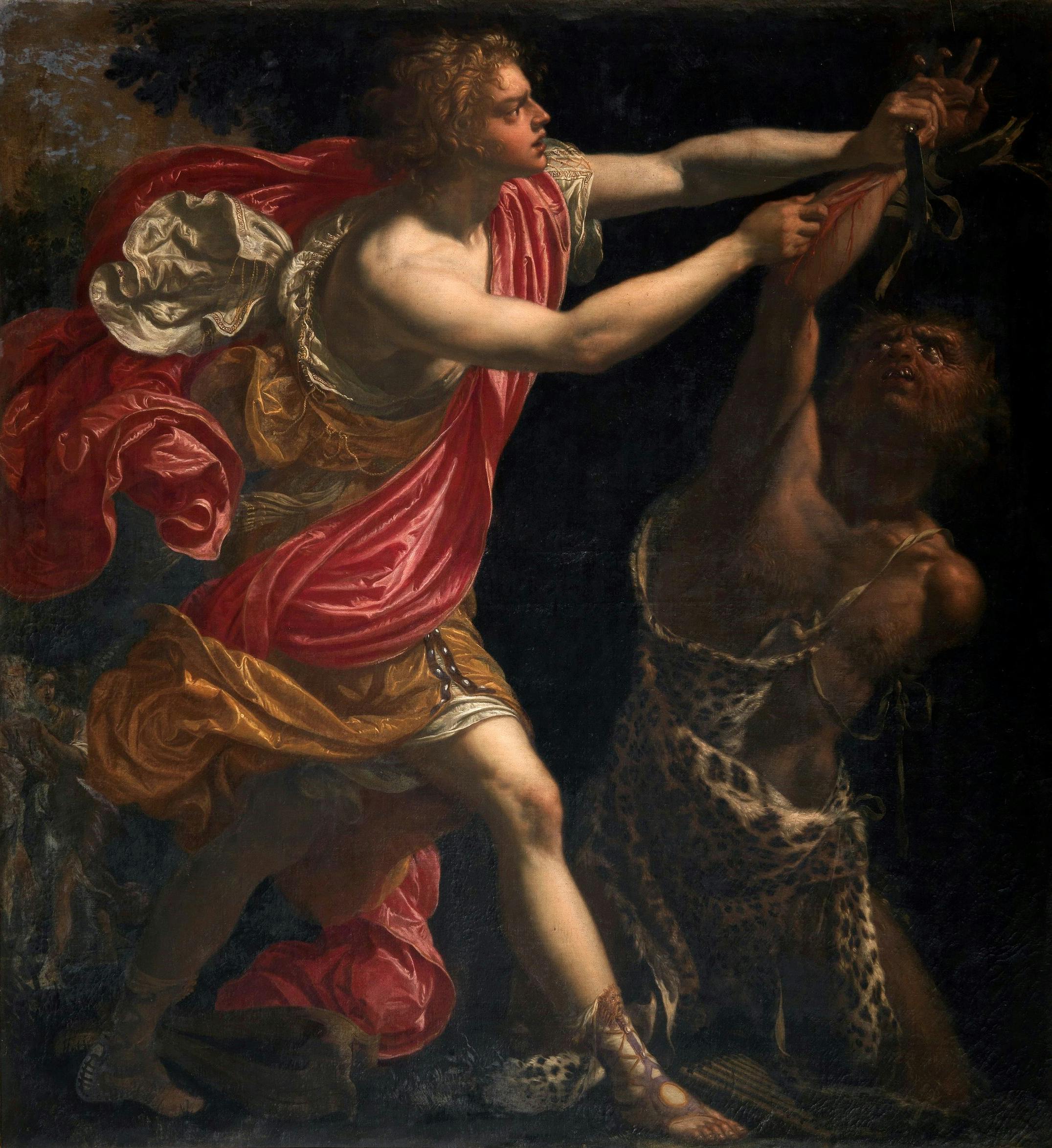Apollo flaying Marsyas
attributed to Giovanni Bilivert (Firenze 1584 - 1644)
The mythological story of the musical competition between the god Apollo and the satyr Marsyas is told by Ovid in his Metamorphoses and by Diodorus Siculus. After picking up the double-piped reed instrument (aulòs) invented by the goddess Athena, the Phrygian satyr Marsyas became so skilled in its playing that he challenged Apollo to a music contest, in which he was beaten. The scene captures the most dramatic moment, Marsyas’ punishment for having dared to challenge the Sun God. Apollo digs his fingers into the forearm of Marsyas, who is tied to a beech trunk, to flay him alive. The conflict between the two culminates in Marsyas’ cries of pain, and in the athletic movements of Apollo. The painting itself most likely comes from the Medici’s collections and is considered to be the work of Bilivert or his most talented pupil, Bartolomeo Salvestrini; some scholars have even advanced the doubtful attribution to Artemisia Gentileschi. The well-defined drawing, colour range, balanced composition and anatomical plasticism draw on a base of Florentine culture. However, there is evident inspiration from ancient Roman (the Belvedere torso for Marsyas) and contemporary statues, which can be seen in the sculptural plasticism of the drapes on Apollo’s robes, reminiscent of certain solutions used by Bernini.
